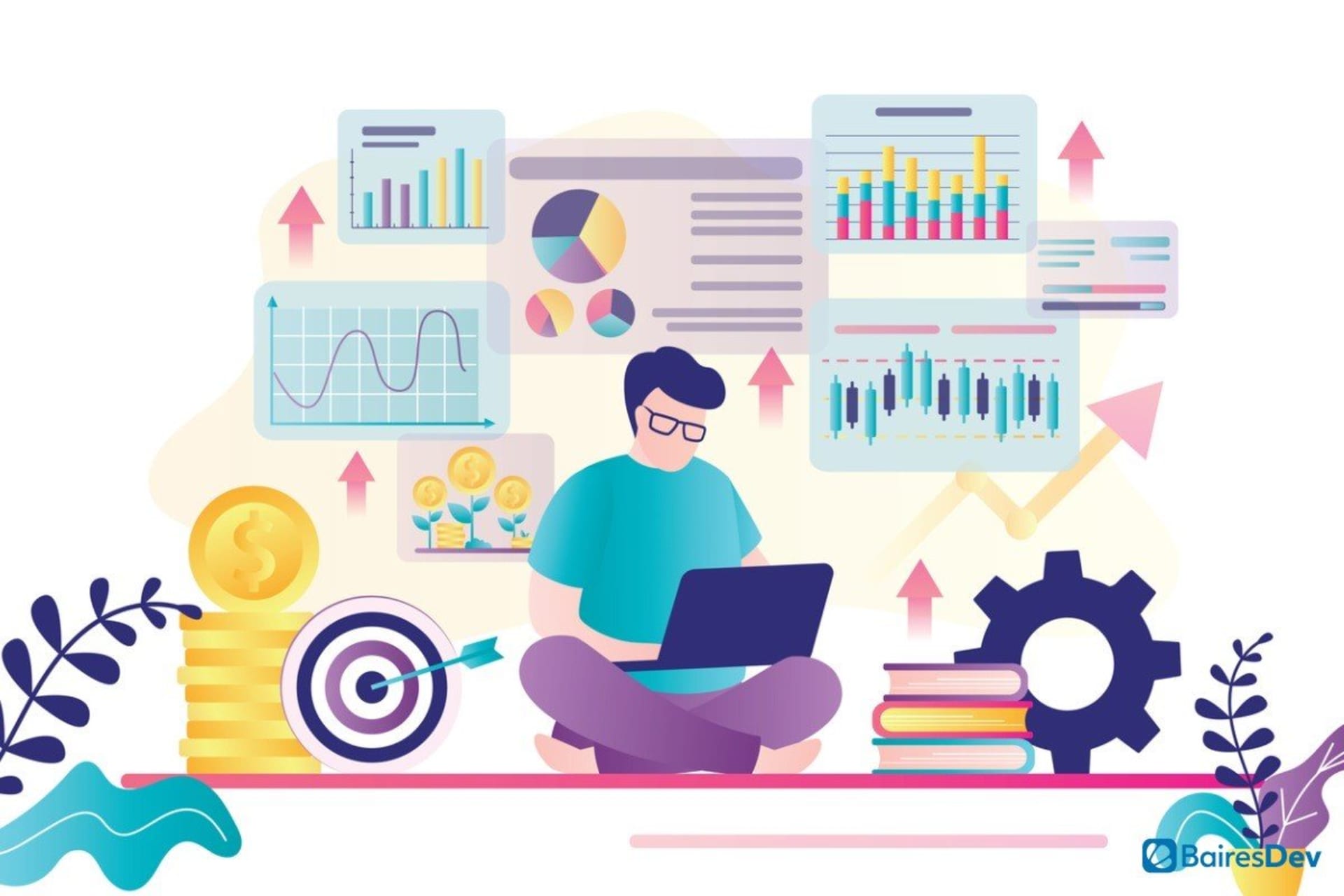The proliferation of data in recent years has given businesses the capability to make decisions based on objective criteria rather than just gut instinct. For example, a marketing team might believe one of its programs is working based on increased spending overall. However, is the customer segment being targeted in the program the same that is actually doing the additional purchasing? It’s difficult to know without data.
With data, the same marketing team can be sure: “We targeted this segment in our campaign and it has been spending more per purchase since it started.” Further information can be gleaned, including the percentage of increased sales, how much business is being done online versus at a physical store, and much more. That’s why data-driven companies are more successful.
Yet, to take the best advantage of data, your employees must be trained in how to gather, interpret, and present it. This skill is no longer only the purview of data analysts. Data literacy — the ability to understand, interpret, and communicate about data — is a skill every 21st-century employee needs. Here, BairesDev explores more about why data literacy is important and how to make sure workers have it.
Data Is Everywhere
No matter what part of the business an employee works in, they are likely to encounter data. Data is being collected from manufacturing, social media, finance, marketing, human resources, customer care, and other common business departments. Team members trying to make sense of data don’t have time to wait for analysts to tell them what it means. In order to maintain agility, they need to be able to interpret the data and make decisions on their own.
Even those who don’t deal with data directly should be able to understand how their managers and other leaders arrive at their decisions. They should be able to sit through a presentation involving data and understand the charts, graphs, and stories being presented.
Critical Data Literacy Skills
The following skills specifically are needed for workers to be considered data literate:
Understanding Common Data Sources
To gather data, companies use a wide variety of sources, including information from news organizations, devices, and customer behavior. To be considered data literate, workers should be able to recognize reliable from unreliable sources of data, and knowledgeably interpret each type. They should be able to operate data analytics dashboards to retrieve the right report to suit their needs.
Interpreting Data
The next step is reviewing data and gleaning insights from it. This skill is foundational for data literacy. Team members can perform data analysis using a variety of tools, techniques, and frameworks. An article posted by Harvard Business School Online notes the most common types of data analysis are:
- Descriptive – explaining or describing what has happened
- Diagnostic – explaining or diagnosing why something has happened
- Predictive – forecasting what might happen
- Prescriptive – prescribing a course of action that will lead to the desired outcome
Communicating About Data
Information about how different types of customers use your company’s products can be presented as a table, a graph, or even a narrative or video to help others understand how to best serve those customers. According to the HBS Online article, “The act of transforming data from a raw state into a form that can be more readily used” is known as data wrangling, data munging, or data cleaning.
Thus, workers should be able to communicate about data using various data visualizations. They should also be able to use it to support specific business scenarios. For instance, a team may want to show company leaders that there is a demand for a new product they’ve developed. The way they communicate with data could make or break their presentation.
Additionally, data-literate employees should know how to use data responsibly. That is, they should share what the data actually shows rather than manipulate it to represent something else.
Performing Data Governance
Data is an asset and, as such, it must be maintained. Data governance is the sum of the practices a company uses to manage data. Data literacy includes the ability to understand and comply with data governance procedures as mandated by governmental or organizational regulations.
Many companies create written data governance policies that explain required processes, including those that ensure quality, security, and privacy. Varying rules might govern different types of data. For example, customer histories might be maintained indefinitely, while email messages might be purged after 90 days.
How to Boost Data Literacy
The skills listed above are the foundation of those needed for employees to become data literate. Companies will gain from creating a data literacy program to help workers learn these valuable skills. Here are a few tips for getting started:
- Perform an initial assessment to determine the present level of data literacy among employees.
- Remember that some employees may be many years out of school and some of their basic skills, such as math, might be rusty. These employees may need to brush up on other basic skills before attempting data analytics.
- Develop courses, small group trainings, online videos, and other resources to teach employees the needed skills. Or hire an external vendor to provide this service.
- Designate a person or group who can be available to answer questions and give them the bandwidth to be able to respond quickly to employee inquiries.
- Give workers small projects to test their skills, then move them into more complex ones. Empower them to make decisions on their own.
- Give employees the chance to tell you what they need to develop their skills and act on their requests.
- Be very clear about the benefit of learning these skills to the company and to employees themselves.
The following video explains more about how to improve data literacy:
Data Literacy Now Is Like Computer Skills Then
If you’re old enough, you remember having to gain computer skills that may not have been taught to you in school. Perhaps you had to learn spreadsheet basics in order to get a certain job or to be considered a skilled professional in your field. Or perhaps you had to learn how to navigate the internet. The current push for data literacy is similar.
Then, companies had to either find workers who knew these new skills or train them. Teaching data literacy may seem like a big undertaking. But you shouldn’t put it off, because having a data literate workforce will only become more essential in the coming years.







